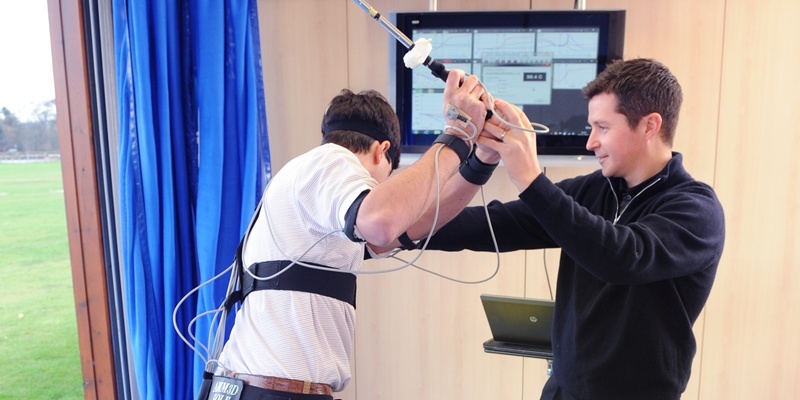It may be famed as the ancient home of golf, but some distinctly 21st century technology has set tongues wagging in St Andrews.
Talk on the carefully manicured greens and painstakingly maintained fairways of the Old Course has turned to a new ”biomechanics” system which boldly promises to improve the swing of enthusiasts.
Old Tom Morris and his cohorts may have managed a round pretty well without the use of computer wizardry, but the team behind the system insist it can improve performance while also reducing the risk of injury.
The electromagnetic Advanced Motion Measurement (AMM) system was developed by an Olympic athlete and has already found favour with several top players on the PGA Tour. Now pupils of all abilities at St Andrews Links Golf Academy are being urged to give it a try.
The AMM system monitors the movement of a golfer’s body as he swings a club, using small sensors to detect rotational and translational movement. Data from the swing motion measurement can then be fully analysed using specialist software.
The system has been developed by Stephen Cheetham and his brother Philip, an Australian gymnast who competed in the 1976 Olympics in Montreal. It monitors elements such as sway, lift and thrust, pelvis rotation, forward bend and side bend.
A team of PGA professionals at the St Andrews Links Golf Academy, led by director of instruction Steve North, will be using the system in their coaching programmes.
While the thought of mind-boggling new technology is sure to be a big draw for up-and-coming young players keen to test themselves on the famous fairways of St Andrews, for some it is clearly not a top priority.
One self-confessed ”old hacker” said: ”I am not terribly au fait with computers and perhaps this new fangled system is best left for the young ones.”
The ageing enthusiast added: ”The movement of some parts of my body when I swing a club are probably best left a mystery!”
